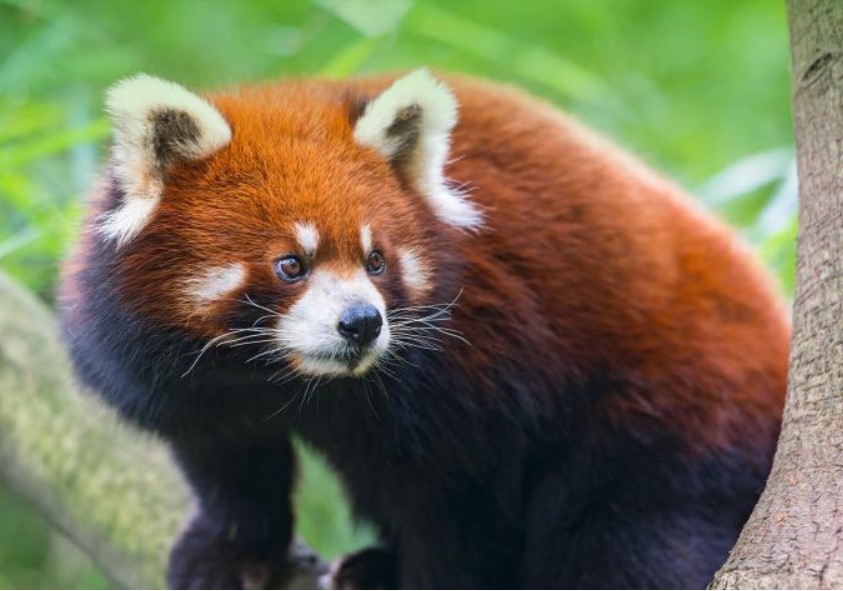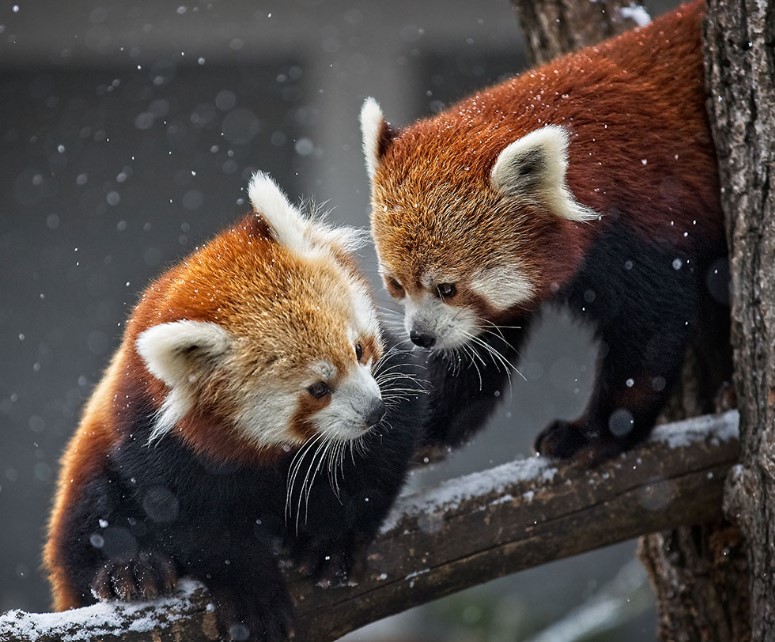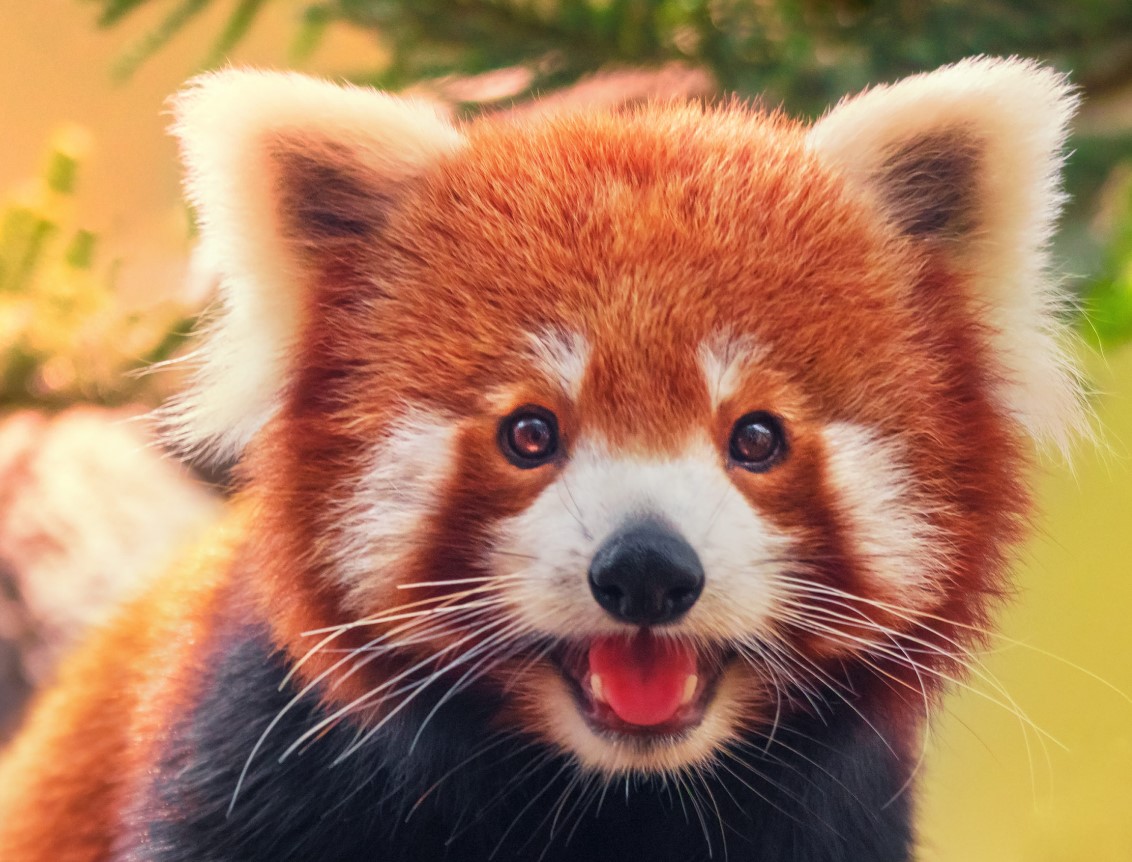





Red pandas(Ailurus fulgens) are small mammals native to southwestern China and the eastern Himalayas. Many people think they are related to giant pandas and resemble raccoons, but they are the only species in their family, Ailuridae. They mainly live in the mountainous temperate forests of the Himalayas. In China, the range of these animals and giant pandas overlap each other. Their name in Chinese is “hun-ho” which means “fire fox.”
It has dense reddish-brown fur, a black underside and legs, and a ringed tail. It has white markings on its muzzle, face, and ears. They also have fur on the soles of their feet to help them regulate their body heat in the snow. The coloration of their fur appears to serve as camouflage on lichen-covered trees and red moss in their habitat. Their tail is mostly used for balance and ranges from 12-20 inches long, making it half the length of their body. Their tail is bushy and they mostly wrap it around them to keep themselves warm like a blanket. Their body length ranges from 30-45 inches, including their tail. They mainly weigh 6-14 lbs. Males are generally bigger than females.
The red panda is both nocturnal and crepuscular. It typically rests or sleeps in trees or other elevated spaces, stretched out prone on a branch with legs dangling when it is hot and curled up with its hindlimb over the face when it is cold. It is adapted for climbing and descends to the ground head-first with the hind feet holding on to the middle of the tree trunk. It moves quickly on the ground by trotting or bounding. After mating, the female will build a nest inside a tree or rock crevice. Their gestation period is 135 days and after those days, the female will give birth to two cubs that are born blind and deaf. They start hearing and open their eyes after 2-3 weeks. At 40-50 days old, they start exploring their den, grooming, and playing with each other. They reach sexual maturity at around 18 months of age and that is when they start leaving their mother, though they may also leave their mother if she is ready to breed again. These animals live from 8-10 years in the wild. They were seen being preyed on by leopards in the wild.
Bamboo is the main source of food for this animal. Unlike giant pandas which eat the stem, red pandas eat the leaves. To supplement their diet, they will also eat fruit, grasses, insects, acorns, eggs, birds, and small mammals.
It’s listed as Endangered on the IUCN Red List. The main threat to these animals is habitat loss. Therefore, protecting these animals means protecting their habitat. Also, poaching is another problem for them. These animals are hunted for their pelts, which are made into fur capes and hats. They are also captured in traps made for other wildlife like wild pigs, deer, and takins. Their numbers might have decreased by 40% in the last 50 years. Today, the population is currently 10,000. Thankfully, many protected areas have been set in place for these animals. There are 20 protected areas in India, 35 in China, 8 in Nepal, and 5 in Bhutan.
The only tip I would recommend for helping this animal is to visit zoos accredited by the Association of Zoos and Aquariums(AZA). These zoos participate in breeding programs and the money that you spend will also fund wildlife conservation. In addition to that, you can also donate to the Red Panda Network at www.redpandanetwork.org. In the website you can also symbolically adopt a red panda or sponsor a forest guardian.